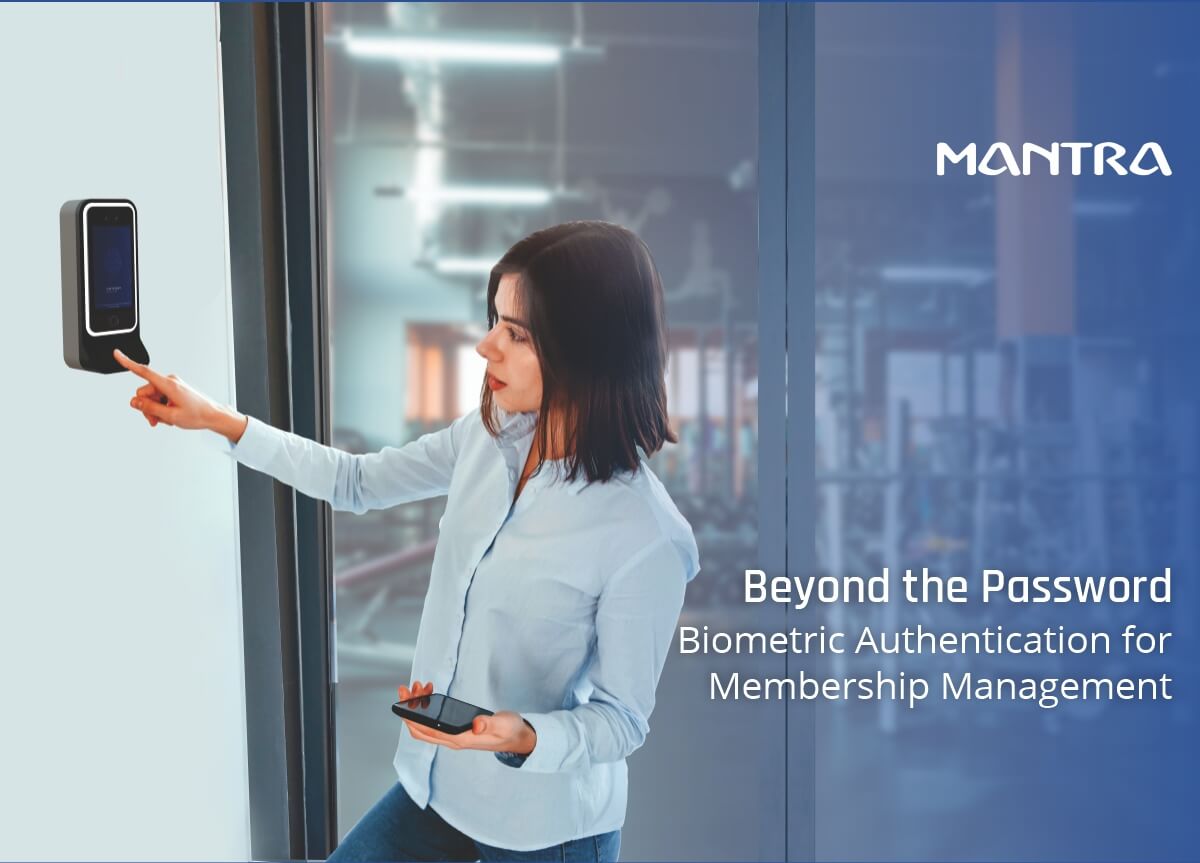
Traditionally, clubs, gyms, and other membership-based organizations relied on manual or access cards for authentication. This is a time-consuming operation that requires a committed individual to monitor membership cards. That may involve human errors and the misuse of cards in different scenarios. Traditional systems are vulnerable to security breaches and inefficient when it comes to maintaining massive datasets. We'll look at why biometrics is a better choice for membership management, and how it's changing the way businesses handle member access control, identity verification, and overall security.
Biometric-based membership management
The advent of biometric technology has altered how organizations employ membership access. It has grown into the most cost-effective and user-friendly solution for membership and access management. Each member of a club or organization must complete a one-time biometric enrolment on the system. Once enrolled, users can utilize biometric authentication to access assets, enter premises, and use services from biometric devices located at various places.
Biometrics provides more than just streamlined membership management and secure authentication; it also offers different access modalities and lowers personnel expenses for managing membership. Depending on how an organization functions and the environment in which it operates, modalities such as fingerprint, face, and iris identification, as well as smart cards and NFC technologies, can be chosen.
Why do Organizations need biometric authentication for membership management?
Over the years, shifting from traditional membership management systems to biometric membership management has become an easy and necessary process. The growing digitalization is one prominent reason for this shift, and digitalization brings a lot of benefits that we will mention below:
Also read: How Biometric Sign-On Solutions Impact Businesses Efficiency & Security
1. Enhance security measures
By employing biometric characteristics, organizations may significantly reduce the danger of unlawful access and identity fraud. Biometric traits, unlike passwords, which may be forgotten, stolen, or rapidly guessed, are unique to each individual, making reproduction or manipulation exceedingly difficult.
Furthermore, biometric authentication adds an extra layer of security by enabling real-time verification. This means that even if a hostile actor obtains physical access to someone's doors or safes, they would still need the authorized user's physical presence to circumvent the system. As a result, businesses can rest ensure that their essential data will be protected even in the face of sophisticated cyberattacks.
2. Improves customer service
The customer (members), gets the best service from the organization, whether it be gym, health, financial services, clubs, etc. Since check-in and everyday processing have become faster and hassle-free, customers can expect a better experience. The best promotion for a club or organization is word of mouth, which can be achieved through easy authentication. And a developing club or organization, based on its number of members, can use biometrics to boost its services and revenue.
3. Streamlined Membership Management Processes
Traditional membership management methods usually need manual data input, card issues, and regular monitoring. These procedures are time-consuming and prone to delays and human error.
By employing biometric authentication, organizations may automate these procedures and eliminate the need for paper credentials or ID cards. Members simply need to provide their biometric features at specified stages. This not only speeds up the registration and identification process but also eliminates the issue of misplacing or losing cards.
Furthermore, biometric authentication may be effortlessly integrated with current systems, resulting in a unified and efficient experience. Organizations may centralize their data, allowing them to provide real-time updates, precise reporting, and easy monitoring of member actions. This complete strategy guarantees that membership administration is simple and painless for both organizations and their members.
4. Creating an Environment-friendly atmosphere
Creating hygienic and environmentally friendly surroundings is something that every organization is trying to give their customers. A paperless or cardless system can achieve such a system that doesn't require the use of paper or plastic and maintains disposal later.
When an organization produces its own ID cards, it must consume paper, ink, and additional power to operate the printing equipment. Organizations may decrease their consumption of plastic and paper by replacing them with a biometric authentication system. Furthermore, by reducing paper waste, a business may keep its surroundings cleaner.
Take away:
As biometric technology is advancing and can bring numerous advantages to membership management in clubs and organizations, it is better not to be late to implement it. Organizations might seek the assistance of biometric companies to help them deploy the system. Select a biometric partner who can assist you in providing various modalities of biometric authentication systems. Additionally, data security and interoperability with current systems are crucial factors to consider when selecting a biometric partner. The biometric company must ensure the implementation of strong encryption algorithms and secure storage methods to prevent unauthorized access or data leaks. Initially, organizations may need to educate their employees about the system and its usage, but in the long run, it eases the authentication process.
Comments